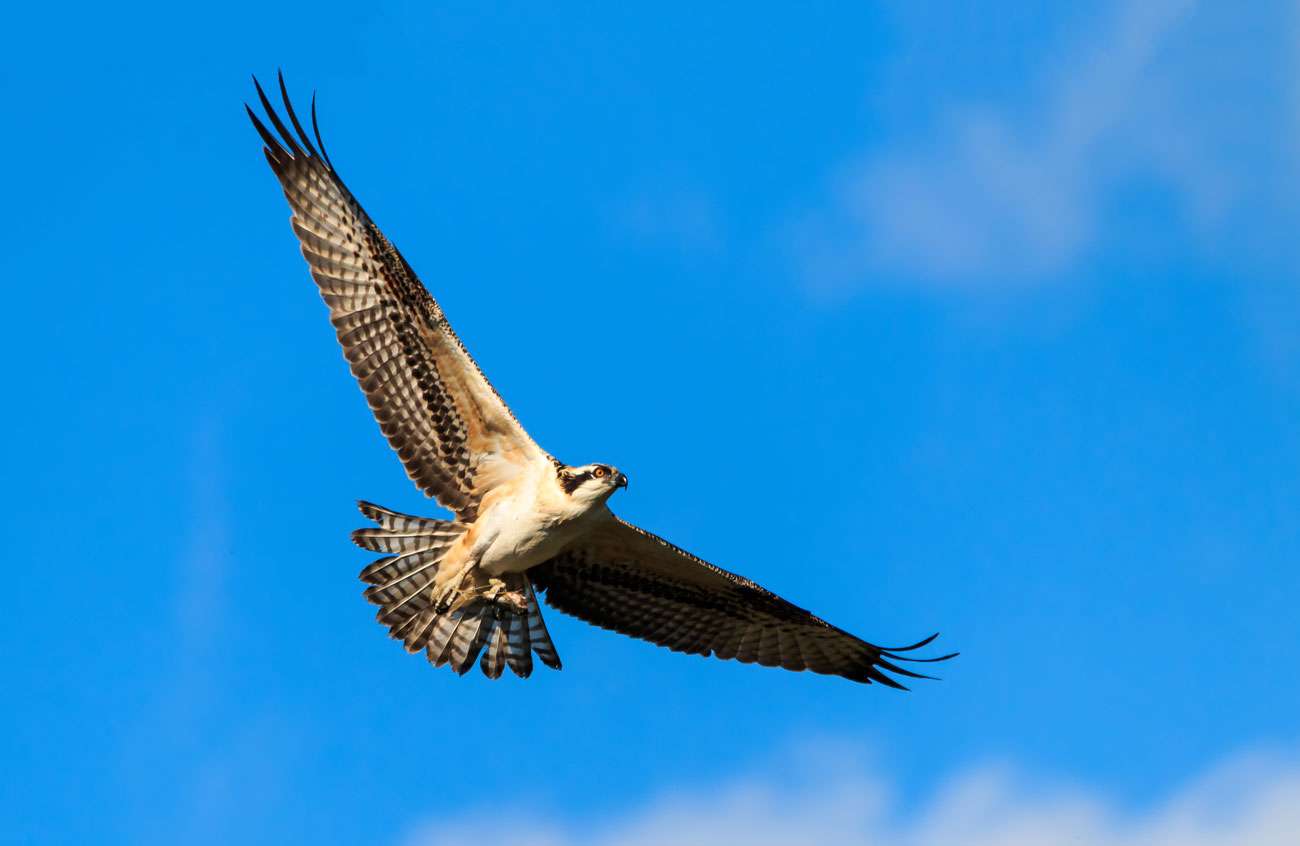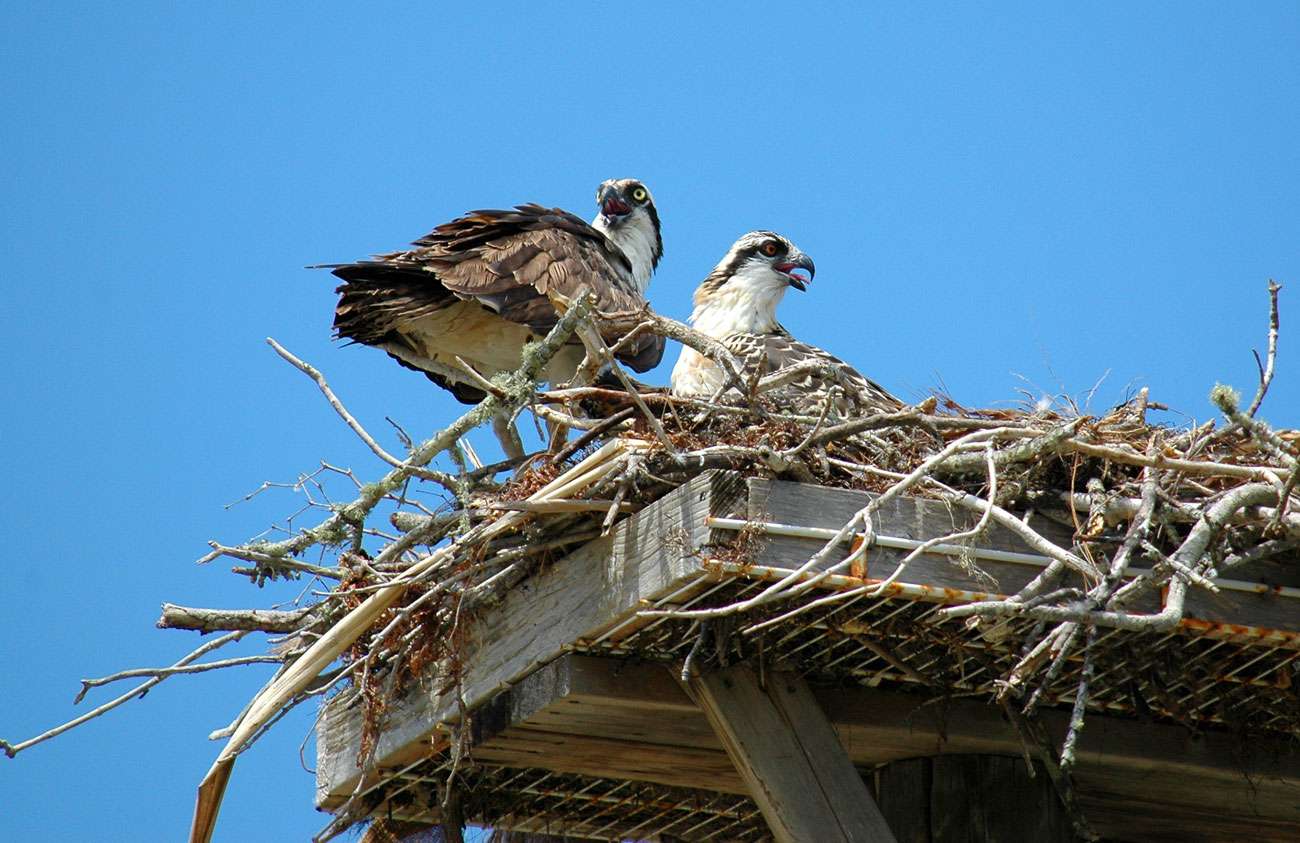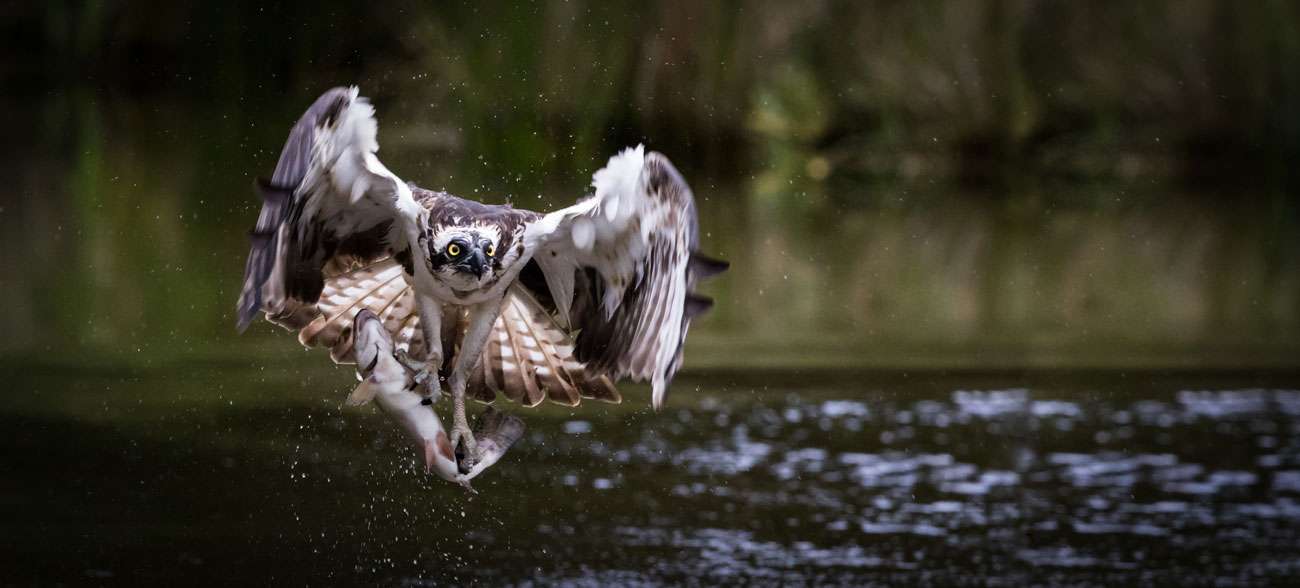
The Osprey searching high above the landscape looking for fish
A magnificent bird attracting more media coverage than most others put together was back in the headlines last month. And what a sickening story it is.
Two days after a pair of rare Ospreys laid their first egg at a north Wales site they were visited under the cover of darkness by vandals.
The intruders used a boat to get to them before firing up a chainsaw to fell the birds’ wooden nesting platform into the lake.
As people speculated about who would do such a thing, the North Wales Wildlife Trust was making a valiant attempt to persuade the confused breeding pair to stay around and try again on another platform.
As I write, several thousands of pounds have been donated to the conservation project by a strong body of well-wishers who are showing their disgust at the attack with some welcome financial support to ensure Ospreys are helped to once again becomes widespread in Britain.
Osprey persecution is nothing new here and it would probably have been extinct as a breeding species long ago. Game keepers, bailiffs, egg collectors and the general inclination to shoot any bird that moved in Victorian times all took their toll.
But conservation efforts and changing public opinion, against a background of stricter legal protection for these and other birds, helped turn the tide.
Back in the 1700s and 1800s, most Ospreys that dared pass over our Waverley Borough, and wider Surrey, were shot. Such a fate befell a bird at Frensham Pond in 1772 while it sat on the handle of a plough eating a fish.

Feeding young on the nest
There is a fascinating record of two ‘noble visitors’ hunting for ‘many days’ around Cranleigh in September 1904. A report in the Surrey Naturalist quotes from A Little Fishing Book record of a celebrated pair – then exceedingly rare – enthralling him and others by catching rainbow trout.
The water had recently been stocked yet, losses to these birds were deemed a privilege: ‘Our Ospreys became famous, for the fact of their presence in Surrey was widely chronicled and excited the admiring interest of bird-lovers all over the country (sic).’
But this non-shooting estate afforded only limited protection. A keeper on neighbouring land was proud to be seen later holding the dead body of one of the Ospreys. The horrified reaction of the bird conservationists can only be imagined.
For many years last century Ospreys was not seen by either the vast majority of birdwatchers or the birds’ oppressors. But they returned to breed in the Scottish Highlands in the 1950s and subsequent expansion there led to more sightings of passage birds in the south of England.
I saw my first one during a memorable visit to the RSPB’s Loch Garten showcase hide in Speyside in 1983 where I became one of over two million visitors.
People always remember their first encounter with an Osprey and mine seems like yesterday. I refer to my old notebook: ‘Went to the Osprey hide in Abernethy Forest and saw a male Osprey on top of a pine tree beside an old
nest, at 200 yards. The female sat on three eggs in a nest ‘next door’ where they moved a couple of years ago when the first tree started dying. The female was chirping to the male and hungry. It had only had one fish that day, a small pike.’
It was doubly memorable because as I looked right I spotted a bonus bird, a male Capercaillie, eating pine shoots on a treetop. My excited announcement to those in the hide was greeted with great surprise by the RSPB wardens there who considered me extremely lucky.
During later encounters with Ospreys on that holiday I saw them hovering over lochs and diving spectacularly, feet first, for fish. I was thrilled to find other nesting Ospreys too.

A perfect catch and take off with a trout from the river
They looked like they had a missile as they carried their catch away in their talons with the fish’s head pointing in the same direction as the bird was heading.
I guess you learn a thing or two about aerodynamics if you have a five-and-a-half-foot wingspan and fly twice a year over the Sahara Desert to and from West Africa.
They fly over here now regularly too. I am pleased to report that the skies of Surrey increasingly testify the conservation work at various sites in England is paying off.
In early Spring these amazing birds pass singly over the Surrey Hills, and Cranleigh and Ewhurst too, on their way from West Africa to breeding sites further north. Occasionally they still stop off in the Waverley area to fish and may hang around for more than a day.
In March and April, and September, look out for any large gull and, if it is not too far away, try and double-check it truly is one. For many observers, the ‘gull’ turns out to be a most welcome Osprey instead.
A friend and I saw one heading towards London back in March this year and we have seen them increasingly regularly in the early autumn. Watch out for one on its return journey in a few month’s time.
An Osprey could even appear over your house, as it did for a delighted couple of friends of mine. They watched it circling 100 feet up over Mount Road, Cranleigh, for around three minutes one late August afternoon.
They are often higher – so without binoculars you may need Osprey’s eyes.
Twitter – @Crane_Spotter
Click here to see all of Robin Stride’s previous Crane Spotters.











